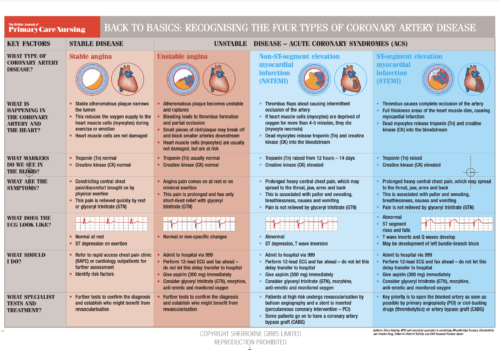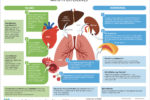




Prevention of stroke is a key component of the overall management of stroke. Primordial prevention strategies include avoidance of tobacco use, maintenance of an adequate level of physical exercise and optimal diet and weight, and avoidance of heavy alcohol intake. Several medical risk factors have been demonstrated clearly, and intervention to optimise these risk factors for primary prevention (of first stroke) and secondary prevention (of stroke in those known to have cerebrovascular disease) has a robust evidence base.
All change’ is hitting the NHS once again. The coalition government’s health white paper shifting commissioning to primary care has prompted headlines predicting ‘the end of the NHS’. There is no doubt that the next few years will see massive change, but patients will still need looking after, and this is where practice nurses will continue to do what we have always done best – providing effective education and care. And the BJPCN will continue to support you in this – with evidence-based information and practical tips on the management of patients with cardiovascular disease and diabetes.
Sexual activity and erectile dysfunction in men with cardiovascular disease: assessing and managing riskProfessor Michael Kirby
This article reviews latest recommendations on how to assess the risk of sexual activity in men with cardiovascular disease (CVD), and how to safely manage erectile dysfunction (ED) in these patients.
The prevention of cardiovascular disease (CVD) is being moved up a gear with the ambitious and wide-reaching NHS Health Check programme. The agenda for this programme has been clearly laid out for us in the Putting Prevention First best practice guidance that was published in April 2009. The “Cog Man” on the cover highlights the close links between the heart, brain, kidneys and diabetes, explaining the comprehensive nature of vascular risk assessment, and this image is going to be seen regularly on national leaflets and posters promoting the programme. This article provides a practical guideline for the primary care team on implementing the Health Check programme, setting out who we should be checking, what we should be checking and how we should act on what we find.
The prevention of cardiovascular disease (CVD) is being moved up a gear with the ambitious and wide-reaching NHS Health Check programme. The agenda for this programme has been clearly laid out for us in the Putting Prevention First best practice guidance that was published in April 2009. The “Cog Man” on the cover highlights the close links between the heart, brain, kidneys and diabetes, explaining the comprehensive nature of vascular risk assessment, and this image is going to be seen regularly on national leaflets and posters promoting the programme. This article provides a practical guideline for the primary care team on implementing the Health Check programme, setting out who we should be checking, what we should be checking and how we should act on what we find.
The Stroke Association estimates that about 150,000 people suffer a stroke in the UK each year. Stroke is the third commonest cause of death in developed countries and the leading cause of disability. So can we reduce this burden? In this article, we look at the evidence for statins in the secondary prevention of stroke.
In this article, we look at how a primary prevention team introduced a systematic approach to target people who had premature coronary heart disease in their family and offer them a comprehensive cardiovascular disease risk assessment.Based on the findings from the EUROACTION study, the next step was to involve their partners based on the recognition that they often share risk factors due to lifestyle.
Most smokers want to stop smoking and intend to stop at some point, according to research. Nearly half of all smokers expect not to be smoking in a year’s time, but only two to three in every hundred actually stop smoking permanently each year. It is widely recognised that healthcare professionals have an important role to play in helping patients to stop smoking, but what is the best way to achieve this?
Most women think they are at greatest risk of dying from cancer, especially breast cancer, but in fact, women are nine times more likely to die from cardiovascular disease (CVD) than from breast cancer. The menopause has particular significance in CVD risk. In this article we look at what happens to cardiovascular risk at the menopause and opportunities for CVD prevention.
How do you recognise a transient ischaemic attack (TIA) and how does this differ from a full stroke? In this article, we explore the ABCD2 score, which can be used to identify high- and low-risk TIAs, and the best course of action if a TIA is suspected. A TIA is very often the herald of a more serious and permanent stroke, underlining why it should be acted on as a matter of urgency, and there is an update on the current guidance from NICE and the Royal College of Physicians.
The NICE lipid modification guideline, published in May this year, covered both primary and secondary prevention of CVD. This article will look briefly at the principles of this guideline in relation to primary prevention and then go further to highlight the key issues regarding statin prescribing for people established to be at high cardiovascular risk.
A unique new e-platform for primary care

For healthcare professionals in countries with applicable health authority product registrations. The content may not be approved for use in your specific region or country. Please review the applicable product labelling for your country for indications and instructions prior to use. If not approved, please exit this site.
We use cookies to ensure that we give you the best experience on our website.
By continuing to this site you are confirming that you are a healthcare professional and are opting into the use of cookies.


















